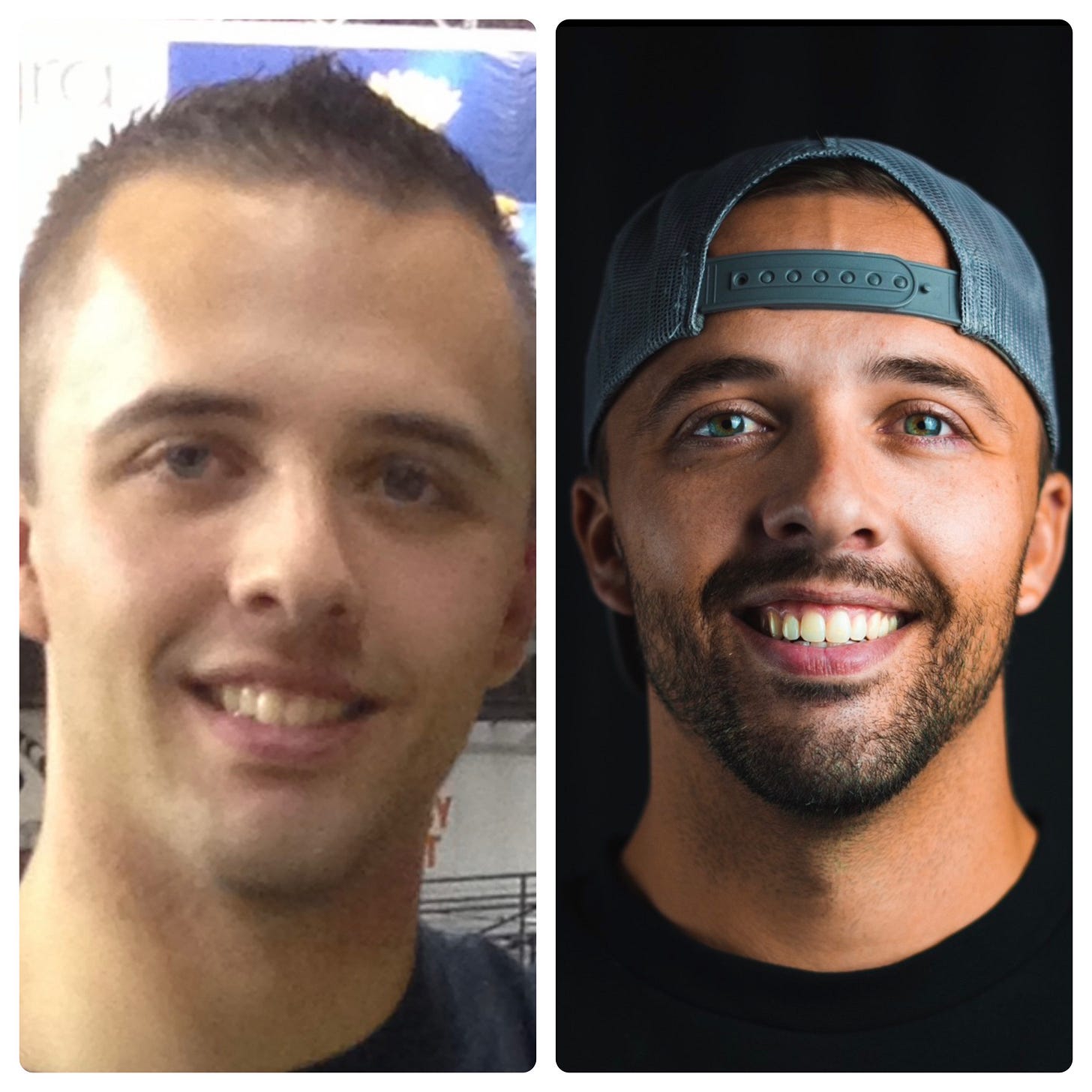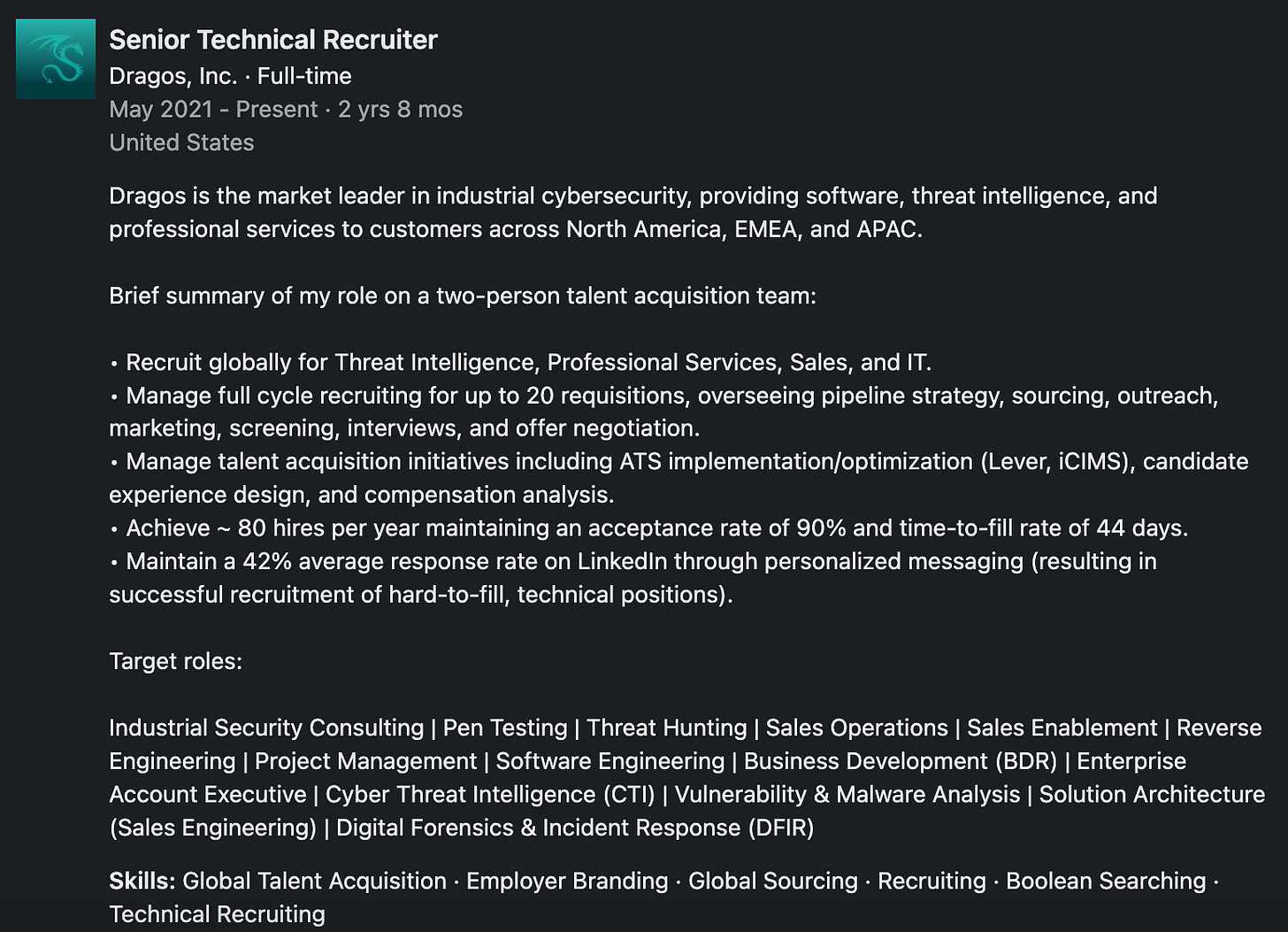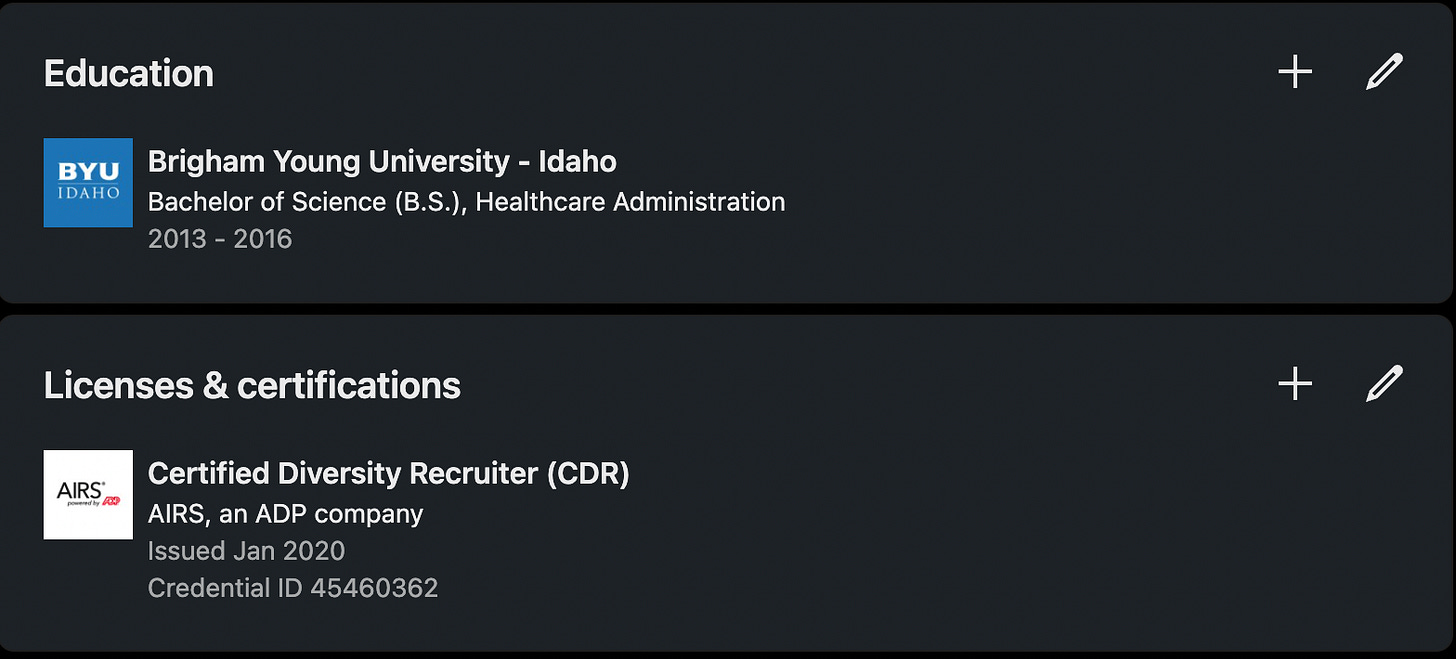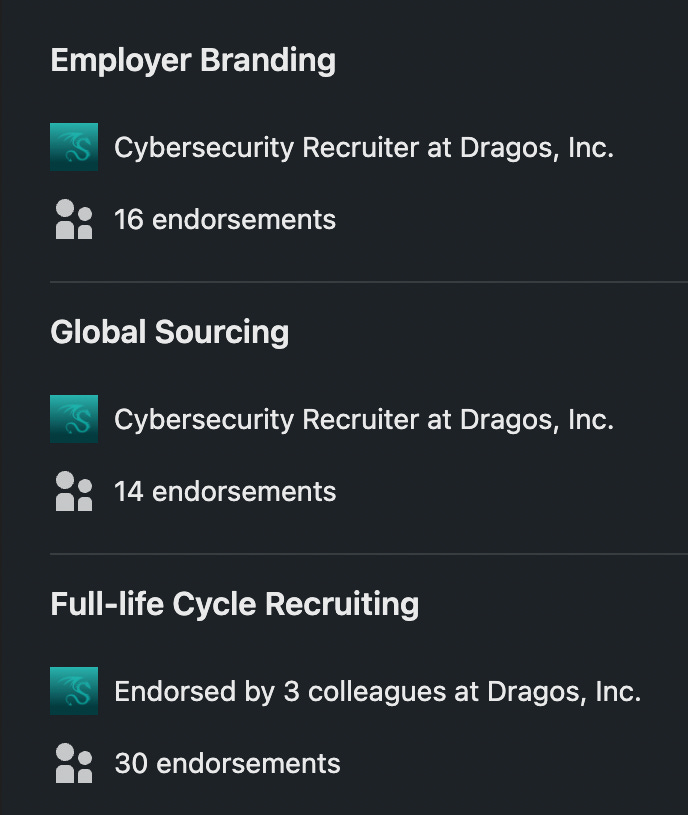Transform Your LinkedIn Profile Into a Career-Boosting Machine
7 building blocks of a successful LinkedIn Profile
I’ve analyzed countless LinkedIn profiles in my career.
Here’s the truth:
The majority need serious help.
Your LinkedIn profile can become a massive asset if you design it the right way.
Today you’ll learn how to optimize your profile in order to …
Show up in more searches
Drive more traffic to your profile
Get more job opportunities
Let’s do this! ____________________________________________________________________________
Why does your LinkedIn profile matter?
Your LinkedIn profile is your personal landing page and it serves two purposes:
It represents who you are as a professional.
It helps you show up in key word searches.
Recruiters and hiring managers are looking for their next candidate on LinkedIn. If your profile is lacking important information, you become invisible.
Let’s look at an example from a Recruiter perspective.
Let’s pretend I’m looking for a Reverse Engineer.
To find the right candidate, I’ll type in a “boolean search string” which is a series of key words that represent the candidate I’m looking for. I’m telling LinkedIn to show me every profile that contains these exact words.
It would look something like this:
“reverse engineer” (“ida pro” OR “ghidra” OR “binary ninja”) “malware”
Here’s a list of things Recruiters look for when building a boolean search:
Job titles
Skills
Tools & software
Industry language
Career levels
Company names
So, what’s the lesson?
More key word matches = more opportunity ____________________________________________________________________________
Today you’ll learn about the 7 building blocks of a successful LinkedIn profile:
Professional photo
Banner image
Headline
About section
Work history + Education
Recommendations
Skills + Endorsements
1. Professional photo
Yes, your profile picture matters. LinkedIn is a social site which means your image is important. First impressions are crucial and your headshot is the first thing people notice. No need to hire a photographer; just make sure it’s clear and represents you well. No creepy selfies!
Side note: if you are uncomfortable including a photo, that’s ok. As long as the rest of your profile is solid, you’ll be fine. I message candidates all the time that don’t have one. Ultimately, your experience is what matters most.
Notice the difference between the first profile pic I used and the one I use today (major glow up since my college days, lol).
2. Banner image
Think of your profile as a piece of real estate. If you are selling your house, you’d want some curb appeal. You want it to look nice! A LinkedIn banner can help with this. It should draw attention and give the reader a quick snapshot of who you are. Remember that a banner image shouldn’t be noisy or distracting (avoid overbearing design schemes and colors).
If you need banner ideas, go to canva.com and search for “LinkedIn Banner”. Choose one that relates to your interests, personal brand, or favorite color.
Here are some examples to get you started. These are just ideas - make it your own!
If you have experience:
2-3 key words related to your target role
A brief value statement
Top credentials (if any)
If you’re entry-level:
2-3 key words
The role you’re targeting
Top credentials (if any)
3. A well-written headline
Your headline represents your expertise, your industry, and your value.
After your photo this is the second thing people notice about you. Your headline is the biggest factor that affects how you show up in searches!
Avoid meaningless buzz words such as “driven, innovative, leader”. Soft skills don’t mean much on paper. Let the reader assume soft skills by reading your profile. Soft skills don’t show up in key word searches and therefore don’t really benefit you. It’s okay to show some personality here but I would avoid lengthy quotes or lists like these:
“High achieving cyber security professional with a passion for solving complex problems”
Listing a dozen certifications
Use industry key words. For example, if you’re in the military and transitioning out soon, avoid government titles like, “Cyber Warfare Officer”. Instead you could say, “Cybersecurity Analyst”.
Let’s look at some examples.
If you have experience:
Job Title @ Company Name | Industry | 1-2 Key Words | Top Credentials (if any) | Value Statement
Pen Tester @ Fake Co. | Cybersecurity Consulting | Offensive Security | OSCP, GPEN | 10 years of experience leading cloud, application, and network pen test engagements
If you are entry level (college grad example):
Your Discipline | 2-3 Key Words | Top Credentials (if any) | Value Statement
Security Operations Professional | Cybersecurity, SOC | B.S Cybersecurity, CompTIA Sec+ | President, Cyber Defense Club at University of Idaho, 4 year honor roll
4. About section:
Always write the about section in the 1st person. This is your chance to tell your story. What is your expertise? What are you interested in? How did you get to where you are today? What are you passionate about and why? What are your biggest accomplishments? What are your values?
Just like your headline, avoid meaningless adjectives. They make you sound generic.
BAD EXAMPLE: “I am a motivated self-starter who thrives off of collaboration and challenging goals. I have proven ability to be an excellent communicator and highly organized.”
The above statement doesn’t tell me what you’re capable of as it relates to the role I’m recruiting for.
GOOD EXAMPLE: Right off the bat I can see their experience level, qualifications, background, skills, and tech stack. Well done!
5. Work History + Education
First, make sure your work history is complete, accurate, and up-to-date. Don’t include previous roles that are irrelevant or super far in the past.
Second, use industry titles. This is really important. If your employer gives you a weird title that doesn’t make sense, change it! For example, my old company called me a “Staffing Consultant” which doesn’t mean anything in the recruitment world. Instead, I always used “Recruiter”,
When listing a position, I like to use the “company, role, achievement” framework.
What your company does
What you do
2-3 achievements
Here’s an example from my profile:
Recruiters search for education as well so make sure this section is up-to-date.
6. Recommendations
Recommendations are a great way to validate your experience and to provide your reader with additional context. I recommend reaching out to 3-5 people who can speak to your performance. Just make sure to return the favor:)
7. Skills + Endorsements
List the top skills that are in demand for your field or target role.
Be honest about your experience but be thorough. Asking others to endorse your skills helps you rank higher in searches.
If you need ideas for which skills to include, try looking through 20-30 job postings or creating a list through ChatGPT (just remember to validate the output here).
In this ChatGPT example, I could include the following key words for “Penetration Tester”.
Nessus, Metasploit, Nmap
OWASP
Ethical hacking
Exploit
Intrusion
Vulnerability
Script
Python
Red team
Etc …
Closing
I tell candidates all the time …
“More eye balls on you = more opportunity”
You can’t increase your opportunity if people can’t find you. Invest time in your LinkedIn profile and you’ll get paid back with more attention. Be sure to stay active in the feed as well. Comment, like, share, and engage with content —> get off the sidelines and start talking with people!














Great tips here, Josh. I didn’t know you could customize the banner with your information!